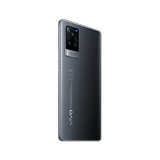Vivo X60 Pro 5G review: Is the built-in gimbal a gimmick?
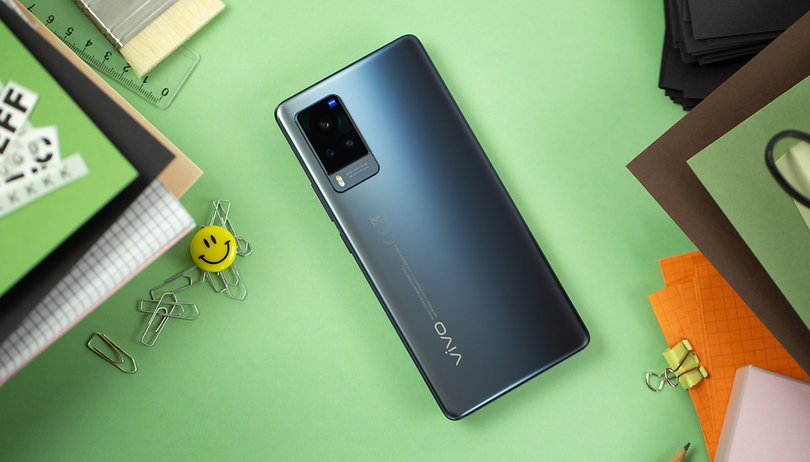

Vivo has brought professionals from Zeiss on board in this effort to further develop its gimbal camera in a smartphone. In addition to improved stabilization, the aperture of the main camera has been increased to f/1.48. Read our review to find out whether the new camera is convincing enough and how well the other features of Vivo's flagship perform!
Good
- Slim and simple design
- Beautiful AMOLED display with 120 Hz refresh rate
- Amazing night mode
- Gimbal camera is still cool to have
- Limited thermal throttling due to Snapdragon 870 chipset
Bad
- Camera software could be more refined
- Less powerful compared to other flagships
- Speaker performance unworthy of a flagship
- No wireless charging
- IP54 certification
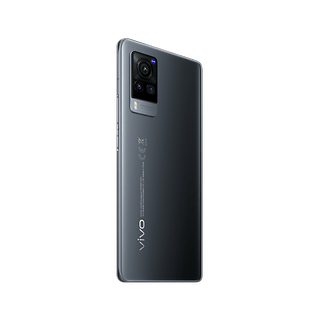
Vivo X60 Pro 5G in a nutshell
The Vivo X60 Pro 5G positions itself in the upper mid-range smartphone segment with a hefty asking price of S899 a pop. Therefore, I will have to pit it against the likes of the Xiaomi Mi 11 or the Samsung Galaxy S21+, which both impressed us in their respective reviews. The Vivo X60 Pro 5G managed that as well, but it simply cannot quite keep up.
This is because the SoC used is less capable in terms of performance and there are always features where the X60 Pro 5G disappoints. Quick-charging at 33 watts is not bad per se, but when placed alongside the Xiaomi Mi 11, for instance, the latter performs far better. Above all, it is the small things like the numerous image errors when snapping photos and the poor mono speaker performance that spoiled the overall impression of a real flagship.
The gimbal camera, along with the open aperture of f/1.48, is a technical tour de force, especially at night and in low light conditions. But how often do you record videos with your smartphone under such lighting situations and since when do you need to see the color of green meadows in complete darkness?
Design & display: Slim form factor that flatters
The Vivo X60 Pro 5G has a 6.56-inch display with a slim 22:10 aspect ratio. As a result, the flagship measures 158.6 x 73.2 x 7.6 millimeters while remaining relatively lightweight at 179 grams. The AMOLED display offers a refresh rate of 120 Hz and is certified for HDR10+ in order to keep up with the times, while there is an integrated fingerprint sensor under the display.
What I liked:
- Very nice AMOLED panel.
- Easy grip despite a 6.56-inch display
- High-quality workmanship
- Location of its power button
- Nice vibration motor
What I disliked:
- Adaptive refresh rate needs to be refined
- IP certification is inadequate
- Unbalanced when placed on its back on a flat surface
- Mono speaker position that performs poorly
At first glance, the Vivo X60 Pro does look a lot like its predecessor, the Vivo X51. This is because it is still a sleek smartphone with a narrow display format. The 6.56-inch form factor comes in an approximate 22:10 aspect ratio that ensures you are able to hold the smartphone with adequate grip in your hand despite its rounded corners.
Vivo's choice of materials is commendable, providing a high quality overall. The shatterproof Gorilla Glass 5 is used for the display, while the back is adorned with a matte glass element that hardly attracts any fingerprints. A real treat awaits you when you come to the power button: Not only is it highly tactile, but it is also well-designed in an intuitive manner that magically attracts your finger.
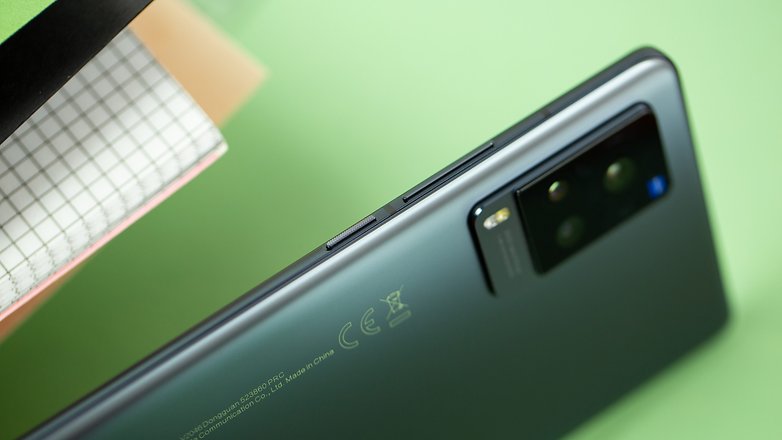
Vivo relies on a very bright AMOLED display with a refresh rate of 120 hertz. As with most flagships released in 2021, the refresh rate is adaptive, allowing you to conserve battery life as and when required. Unfortunately, this happens in a far more aggressive manner than expected, as far as I could tell after enabling the FPS count in the developer settings.
When scrolling through lists or browsing, the smartphone will drop the frames per second to 60. As a result, on-screen movements don't seem to be buttery smooth as you'd expect from a 120 Hz panel. This caused me to set the refresh rate at 120 Hz at all times. The display is also punctuated by a rather small punch hole notch, of which Vivo stated its diameter to be 3.96 millimeters.
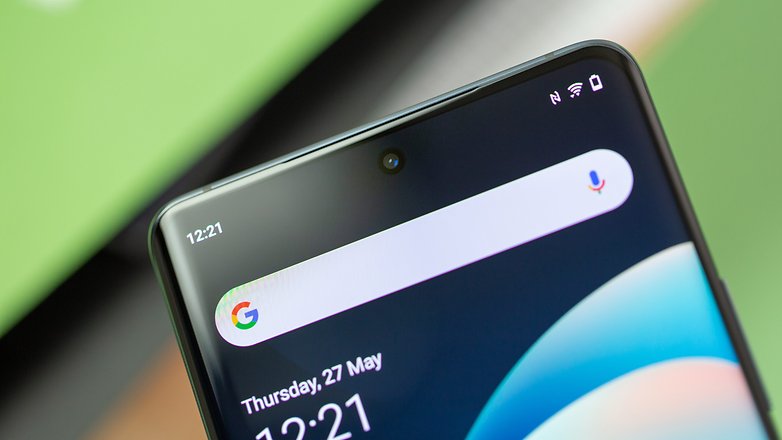
Even though I'm personally not a fan of curved displays and also prefer wider display formats, you get a very good display in the Vivo X60 Pro 5G. This is especially pronounced when compared to my old Pixel 3 XL, where I noticed in the review just how well smartphone displays can now be read under the blazing sun. Personally, I'm also a fan of high refresh rates and am proud to claim that I can tell the difference between 60 Hz and 120 Hz at a glance.
In addition to the HDR-10+ certification for the display, Vivo also listed an audio certification on its homepage. Unfortunately, the mono speaker's poor performance in the Vivo X60 Pro shows just how easy it is for manufacturers to obtain such certification. The mono speaker at the bottom is not only poorly positioned, but it also sounds miserable.
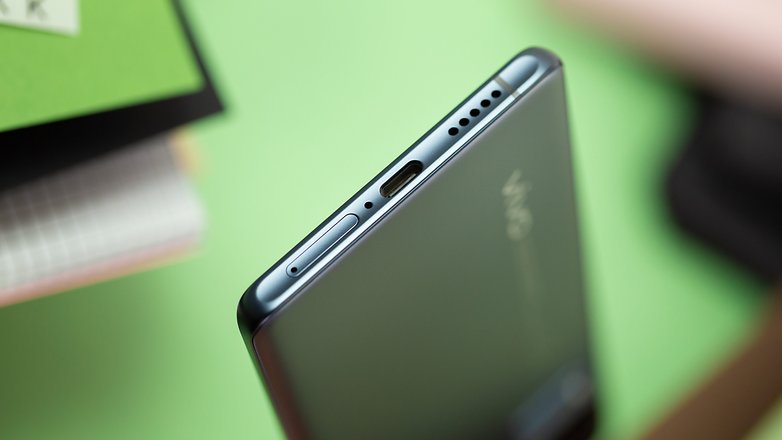
For me, that would leave a very bad taste in my mouth when I forked out €799 for a smartphone. At least they didn't skimp on the vibration motor in return, which performs nicely in a crisp and precise manner.
TL;DR: The Vivo X60 Pro 5G has an excellent build quality and a really nice display. Like many flagships, the AMOLED panel shines at 120 Hz refresh rate with a high-resolution count of 1,080 x 2,376 pixels. Only the low IP certification (IP54) and the poor mono speaker performance make it unworthy of a flagship.
Performance & Technology: Plenty of power without the overheating
The Vivo X60 Pro is powered by a Snapdragon 870 chipset and mated to 12 GB of RAM and 256 GB of internal memory (relying on the speedy UFS 3.1 specification). If you exhaust the 12 GB of RAM, Vivo will virtually expand the RAM to 15 GB using its internal memory. You will have to make do without Wi-Fi 6, but you will get 5G, Bluetooth 5.2, and NFC connectivity in return. The internal storage space if fixed and therefore, not expandable.
What I liked:
- Plenty of power without the Snapdragon 888's overheating issues
- Fast storage standard
What I didn't like:
- No Wi-Fi 6
- No memory expansion slot
When Vivo announced the X60 Pro a few weeks before this review, I found this to be a rather exciting handset. That's because unlike Xiaomi, Samsung, and Asus, Vivo opted not to go ahead with the Snapdragon 888 chipset, the current top-performing processor from Qualcomm. This high-end SoC delivers a lot of performance in its flagships, but along with it comes numerous problems of which overheating and thermal throttling are at the top of the list.
Antoine first noticed this in the Xiaomi Mi 11, and the suspicion was confirmed in the Xiaomi Mi 11 Ultra as well as the Asus Zenfone 8. In order not to damage any of its internal components, the smartphones had to throttle their performance when pushed to the extremes. Hence, I was curious to check out just how the lower-powered Snapdragon 870 in the Vivo X60 Pro 5G would perform in benchmark tests.
Vivo X60 Pro 5G
| Benchmarks | Vivo X60 Pro 5G | Asus Zenfone 8 | Xiaomi Mi 11 Ultra | OnePlus 9 Pro | Samsung Galaxy S21 Ultra |
|---|---|---|---|---|---|
| 3D Mark Wild Life | 4.244 | 5.753 | 5.621 | 5.670 | 7.373 |
| 3D Mark Wild Life Stress Test | 4.242 | 5.825 | Overheating | 5.698 |
5.175 |
| Geekbench 5 (Single / Multi) | 1.031/3.449 | 1.124/3.738 | 1.123 / 3.619 | 1.112 / 3.633 |
942 / 3.407 |
| PassMark Memory |
25.660 | 32.247 | 30.460 | 31.891 |
31.752 |
| PassMark-Disc |
94.681 | 112.318 | 115.473 | 112.370 |
81.108 |
In the stress test of 3D Mark's Wild Life benchmark, the performance level was maintained throughout the entire duration. While the Zenfone 8 had to throttle its performance in Antoine's review in the 20th run, allowing it to only achieve a score of 3,707, the X60 Pro 5G still managed to score 4,208 points in the last run.
The Vivo X60 Pro's hardware also performed very well in real-life use. Loading times in apps are virtually non-existent and even PUBG Mobile loaded quickly. You can increase the graphics settings in the mobile game itself without any hesitation and play in ultra HD at a smooth 60 frames per second.

It is difficult to find out just how effective the trick with the virtual RAM works. After all, 12 GB of RAM should already be more than enough for mobile games, even when you include intensive multitasking processes. However, allocating internal memory for virtual RAM expansion is quite common on desktop operating systems. Since Vivo paid attention to fast internal memory, the feature might just come in handy down the road.
What I liked less are the available compatible wireless standards on this smartphone. Wi-Fi 6 should be present in a flagship from 2021 and features like UWB are also missing from the specifications sheet. And even if the internal storage space is quite generous at 256 GB, there is no room for further expansion due to a missing micro SD memory card slot.
TL;DR: The fact that Vivo does not use the Snapdragon 888 chipset in the X60 Pro is a good decision. This is because you do not have to deal with overheating problems in mobile games and in benchmark tests. The performance is nevertheless sufficient for all conceivable applications. Wi-Fi 6, UWB, and a micro SD card slot are missing, though.
Camera: Stable and "night vision" are hardly possible
Vivo has reduced the number of megapixels in the main sensor compared to its predecessor. You now shoot with a maximum of 48-megapixels, but benefit from the second iteration of the innovative gimbal camera. Alternatively, you can choose between ultra wide-angle and telephoto at 13-megapixels each. You can also snap selfies at 32-megapixels resolution if you like.
What I liked:
- Night mode is pretty impressive
- Gimbal camera compensates for stuttering across 5 axes
What I disliked:
- Imaging errors to be found again and again
- Colors are inconsistent when switching cameras
- Edge blurring in ultra wide-angle
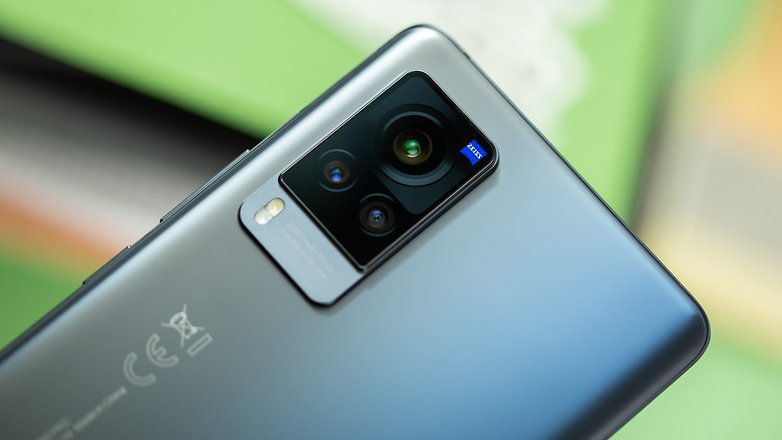
Vivo itself highlighted three camera features when marketing the Vivo X60 Pro: its cooperation with Zeiss, the open aperture of f/1.48 and the latest version of the gimbal camera. Zeiss, a well-known optical system and camera lens manufacturer from Germany, has contributed to the development of the second-generation gimbal camera. But what is the gimbal camera all about, really?
Gimbal camera in the Vivo X60 Pro 5G
The 48-megapixel main sensor sits behind a special lens in the X60 Pro, which can compensate for movement across all five axes in opposite directions when shooting both video and photos. Through this, Vivo achieves the effect of a conventional gimbal, where cameras or smartphones are effectively stabilized using computerized motors.
Optical image stabilizers in smartphones, such as those found in the Galaxy A72 or Galaxy A52 5G, basically work the other way around. Here, the sensor experiences minimal movement in four directions to compensate for shaking and minor movements. In comparison, Vivo's system is not only more effective, it can also compensate for an additional axis.
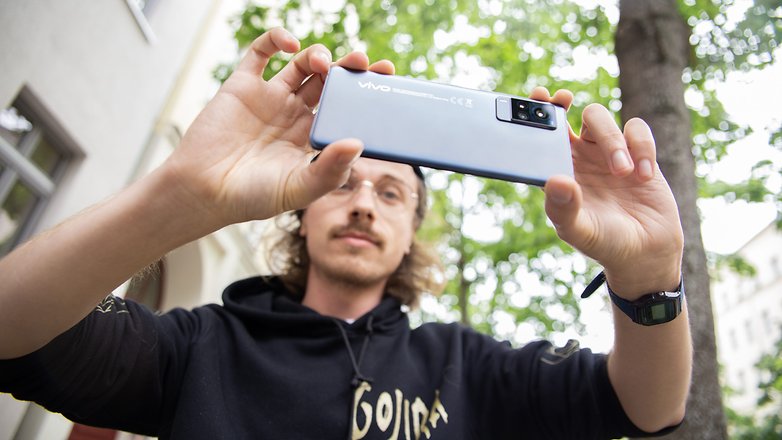
The shake protection corrects not only the X-axis (left ↔ right) and the Y-axis (up ↔ down), but also rotations on the Z-axis. Hence, if you don't hold the smartphone in a straight manner, the horizon will still look straighter than usual. How well does the entire setup work? I tried it out with the Berlin skater, Kaiyatheo Ubolpithak. I followed him on a second skateboard in order to check out just how stable the smartphone camera remained. See the results for yourself:
The shots of the gimbal camera remained very steady even in the midst of movement and it was as smooth as you would obtain using a gimbal. However, if you film still objects, the image tends to look a little bit too artificial. The entire thing gets worse when Vivo tries to keep the ultra wide-angle camera stable as well or when you activate the "super shake protection". When Vivo introduces digital shake, the video stutters, there are weird jumps, and the entire result looks way too artificial and unnatural.
Photos with the Vivo X60 Pro 5G
However, the gimbal camera is not only helpful when shooting video. This is because the stabilization also works when you take pictures with your smartphone. Below, let's go through the most common scenarios in smartphone photography together. Let's get a move on!
Keeps the sunshine in
It's always amazing what kind of pictures smartphones can take in the sunshine. In our camera blind test, you can see for yourself just how close the image quality of current top smartphones is at, being comparable with even professional DSLRs at times. But let's move on to the Vivo X60 Pro 5G, whose image quality didn't always convince me during the daytime.

Basically, I like the pictures that the Vivo X60 Pro 5G takes. Interestingly, we obtain a rather natural bokeh thanks to the wide-open aperture. The image composition with the wall in the foreground looks really nice because of this. While the colours are convincing, the sharpness isn't ideal.
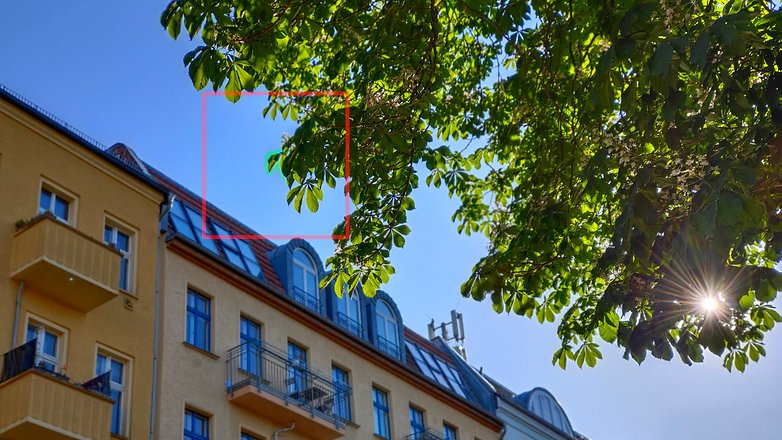
I suspect the culprit behind these sharpness issues is the camera software, which hasn't been perfected on Vivo just yet. When zooming in, images look artificially washed out and in between I could even find total disasters like this visible mask around the leaf. Actually, this is a beautiful photo that was completely ruined because of the masking.

In difficult situations like this image with a strong backlight, the software also causes problems. HDR processing on the framed tree is messy and the leaves look very unnatural. Also noticeable are spots in the sky and a circle that stretches far around the sun. The shot looks unnatural.

Before we get to the portrait feature of the Vivo X60 Pro 5G, here is a sample photo taken using the ultra wide-angle camera. While this one has an adequate resolution of 13-megapixels, the lens seems to deliver blurry photos at the edges. Overall, the entire photo lacks punch.
Portrait mode and selfies
Apart from the natural bokeh that we could see in the first picture under bright daylight, the Vivo X60 Pro 5G also sports a portrait mode. Here, objects are digitally cropped and the blur is then softened. The entire performance proved to be decent enough.

Because even with objects that can be cropped rather easily, there is a disturbing border around the image. Moreover, the digital bokeh itself is unattractive. The softly drawn grid in the background looks very artificial and distracts the eye from the actual subject, which is the sign in the foreground.

With people and their hair, which is difficult to crop out, portraits look a little too rough around the edges. The hair looks like a plate like in the left picture while in the right picture, the effect is accentuated even more. This is typical for a Chinese manufacturer with numerous preset beauty filters that are best switched off.
Night mode: Very effective thanks to the gimbal and open aperture
I would say the night mode of the Vivo X60 Pro 5G is technically impressive. Even in situations where I couldn't see anything at all, the smartphone conjures details and colors right out of the deep darkness. Here, I have compared a picture once with my old Google Pixel 3 XL:

On the Vivo X60 Pro, images look nice with very little noise, and the smartphone's software includes plenty of colors even in the darkest conditions. In addition, individual blades of grass are a little more visible in the sharper area than on the Pixel. It's only the blurriness at the edge of the image that bothered me a lot. However, this photo won't make it to my wall.

This is the impression I had when I looked at the night pictures of the Vivo X60 Pro on the computer. Although the images are clearly brightened, they don't really depict the color moods in reality. And that's what I want to capture when dusk falls, instead of counting every blade of grass.
TL;DR: The pretty decent camera performance in the Vivo X60 Pro 5G is limited mainly by its software. Not only are there imaging bugs, features such as portrait mode or night mode lack the necessary refinement. At night, the Vivo X60 Pro is technically impressive, but the pictures do not really look good.
Battery: Good battery life but lacks wireless charging
The Vivo smartphone is powered by a 4,200 mAh capacity battery. It supports Quick Charging at a maximum of 33 watts and you have to make do without wireless charging and reverse wireless charging support.
What I liked:
- Long battery life despite turning on 120 Hz refresh rate and being on a 5G network
- Fast charging at 33 watts
What I disliked:
- No wireless charging support
With a 4,200 mAh battery, the Vivo X60 Pro joins the ranks of flagships with smaller batteries. The Zenfone 8 offers less capacity at 4,000 mAh, but Xiaomi's flagships and the Galaxy S21 Ultra rely on battery capacities of at least 5,000 mAh. In return, the Vivo X60 Pro is also a bit lighter and less durable than its counterparts with larger capacity batteries.
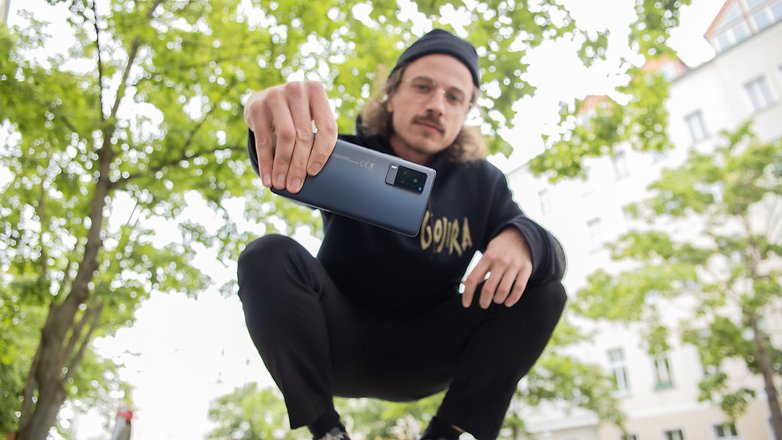
I could not determine any shortcomings in the battery life in everyday use though. I even used the phone with 5G enabled and 120 Hz refresh rate at all times. In addition, I used the smartphone as a mobile WLAN hotspot due to Internet issues I had at home. Despite this intensive use, the battery easily lasted an entire day.
Quick-charging is not all that impressive at 33 watts, but it is sufficient for now. I began the charging process at 7 percent remaining, reached 25 percent after 7 minutes, 50 percent after 17.5 minutes, with the battery hitting full charge after just 50 minutes. These are good times, which means you can get up and running quickly enough in everyday life.
I have to criticize Vivo for not offering wireless charging in the X60 Pro. If I were to buy a flagship, I would be disappointed if this feature was missing.
tl;dr: Despite the rather small battery compared to other flagships, the battery life of the Vivo X60 Pro 5G is solid. The quick-charging is pleasantly fast despite 33 watts and thus only the missing wireless charging is annoying.
Vivo X60 Pro 5G technical specifications
Vivo X60 Pro specifications
| Model | Vivo X60 Pro |
|---|---|
| Processor | Snapdragon 870 |
| Memory (RAM / Internal) | 12 GB RAM LPDDR5 / 256 GB UFS 3.1 |
| Expandable memory | No |
| Connectivity | Dual SIM, 5G, LTE, Wi-Fi 5, Bluetooth 5.2, NFC |
| Display | 6.56-inch, 120 Hz, AMOLED, 1,080 x 2,376 pixels (398 ppi), Gorilla Glass 5 |
| Size | 158.58×73.24×7.59mm |
| Weight | 179 g |
| IP Certification | IP54 |
| Camera | Rear: 48 MP (f/1.48) | 13 MP ultra wide-angle with 120 degree field of view (f/2.2) | 13 MP with 50mm telephoto (f/2.46) Front: 32 MP (f/2.45) |
| Video | Max: 4K at 60 fps |
| Battery Capacity | 4,200 mAh |
| Charging Technology | 33 Watt Quick-Charging | No Wireless Charging |
| Materials | Matte glass back |
| Authentication | In-display fingerprint sensor |
| Operating System | Android 11 with FunTouchOS 11.1 |
| Price | $899 |
Conclusion
With the gimbal camera, Vivo also offers a USP in its 2021 flagship that is unavailable anywhere else. The video stabilization performance is excellent and if you record videos often or are a vlogger, this smartphone will be a hit.
- Looking for an alternative? These are the best flagship smartphones in 2021
If you can live without that feature, alternatives like the Zenfone 8 or the Xiaomi Mi 11 become very attractive propositions. This is mainly due to minor shortcomings like the bloated software, the lack of wireless charging, inadequate IP certification, and the slight dip in performance capability due to the SoC, but at least you do not have to deal with the overheating and thermal throttling issues of the Snapdragon 888 SoC.
Similar to my Oppo Find X3 Pro review, I have to give credit to Vivo for trying something new. After all, the gimbal camera is one of those features that makes you thumb your nose at first before you realize that it is a useful feature after all. The feeling of having something new and different is therefore another selling point of the X60 Pro 5G.
